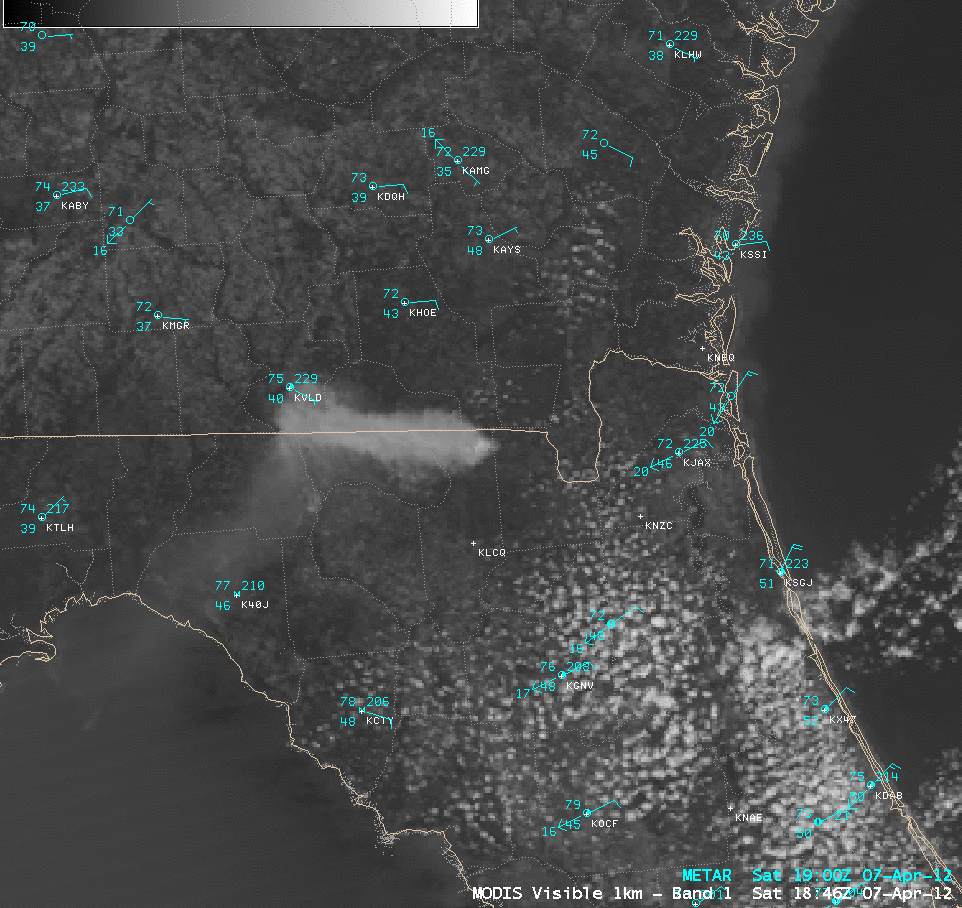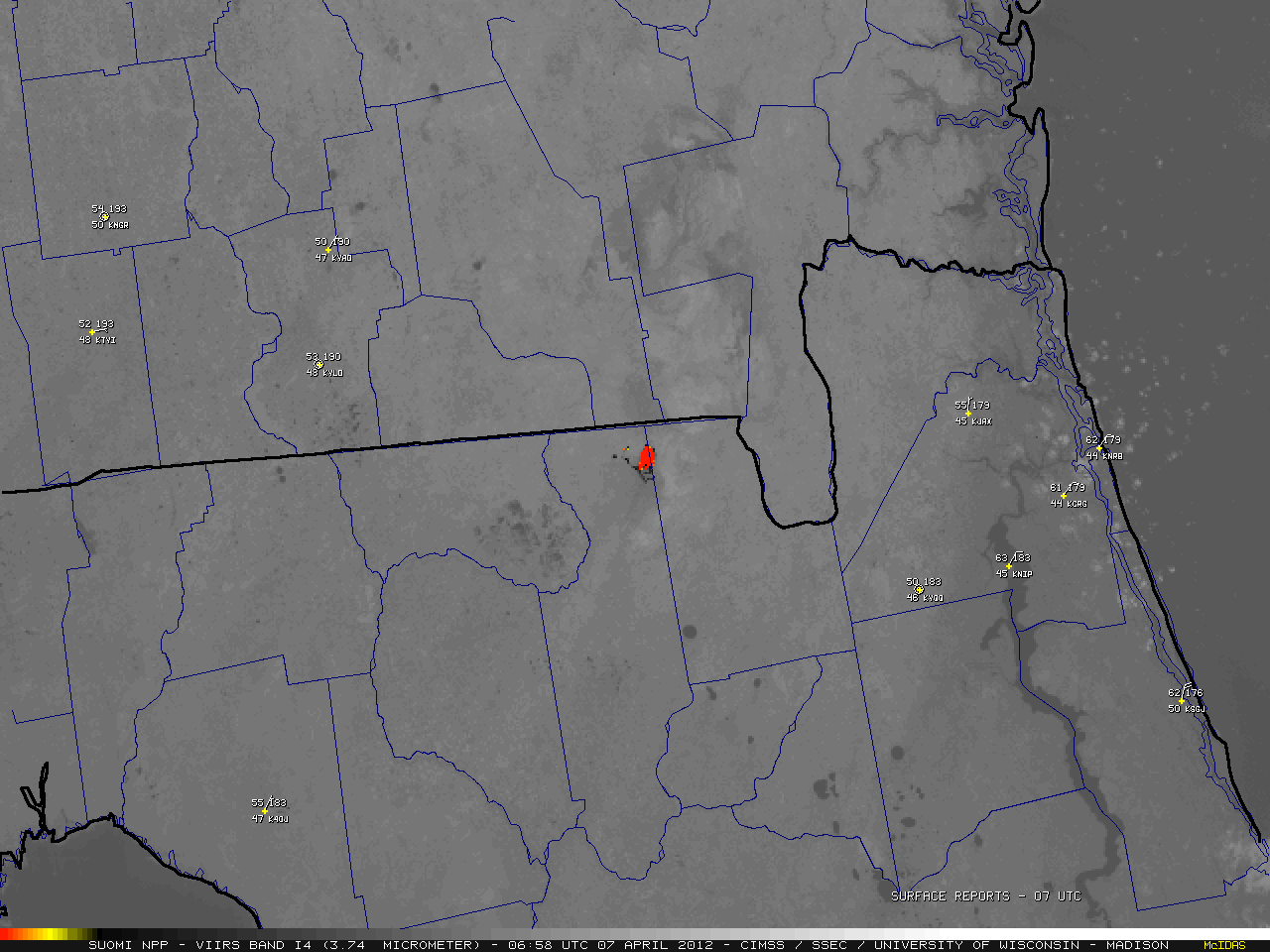“County Line Fire” in northern Florida
McIDAS images of 1-km resolution GOES-13 0.63 µm visible channel data (above; click image to play animation) showed the large smoke plume emanating from the so-called “County Line Fire” that was burning in the Pinhook Swamp area (along the Baker and Columbia County line) of the Osceola National Forest in far northern Florida on 07 April 2012. Strong easterly winds early in the day promoted a long westward fetch of smoke transport toward the Florida Panhandle region, but a change in wind direction along with a reduction in wind speeds allowed the smoke to become more densely concentrated around the burn area later in the day. The smoke was reducing surface visibility and causing air quality problems (see the US Air Quality blog) at some locations across northern Florida.
A 250-meter resolution MODIS true-color Red/Green/Blue (RGB) image from the SSEC MODIS Today site (below; viewed using Google Earth) showed a closer view of the source region of the smoke plume.
Even though the smoke was quite thick over the fire source region, a comparison of AWIPS images of MODIS 0.65 µm visible channel and 3.7 µm shortwave IR channel data (below) showed how the fire “hot spot” (red to yellow to black color enhancement) could still easily be detected with the shortwave IR imagery.
A sequence of 1-km resolution MODIS and POES AVHRR 3.7 µm shortwave IR images (below) showed the diurnal change in size of the fire hot spot signature (red to yellow to black color enhancement).
A comparison of 4-km resolution GOES-13 3.9 µm shortwave IR imagery with 1-km resolution MODIS 3.7 µm shortwave IR imagery in the early afternoon hours (below) demonstrated the advantage of higher spatial resolution for more accuately determining the exact location of the County Line fire in far northern Florida, as well as the ability to detect a few of the smaller fires that were burning at that time in other parts of Florida and southern Georgia.
Finally, a comparison of 375-meter resolution Suomi NPP VIIRS 3.74 µm shortwave IR and 11.450 µm longwave IR images (below) provided even greater detail about the location and size of the fire. Even though the core portion of the fire was hot enough to exhibit a “hot spot” on the longwave IR image, the superior high temperature sensitivity of the shortwave IR channel gave a much more accurate view of the full areal coverage of the most intense portion of the fire (red color enhancement) as well as the location of active fire lines (black enhacement) out ahead of the main fire hot spot.






